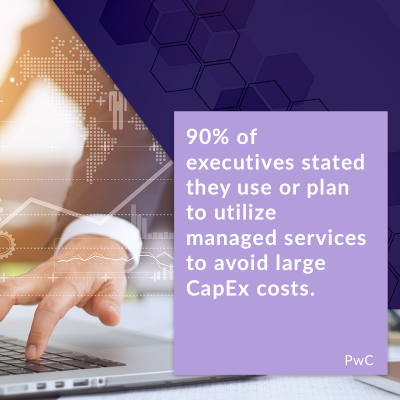The IT Department
IT Departments are vital to the success of a company. Maybe even more important than sales. Just like with any critical department, most organizations create a budget to cover the expenses. Depending on the size and revenue of an organization, different avenues of achieving technology support and cybersecurity may be taken. The biggest constraint that any organization will face is funding. IT support and cybersecurity should be important to any organization, no matter the size. Bad guys are out there, and they do not discriminate.
There are three models that one should consider when creating or revamping their IT department. Your budget will determine which of the three models you should take. One model is to fully staff your own IT department. Second model is to form a hybrid IT department, and finally the third model is to outsource your IT department to a trusted company.
What is an IT Department?
Before diving into the three models, let us define an IT department and summarize its responsibilities. An IT department should consist of a helpdesk, asset maintenance, asset inventory, monitoring, upgrades, and security. The most common responsibility that most people are familiar with is the helpdesk. When an employee has a problem with a printer, program, or system, they will call the helpdesk for assistance. Helpdesk mainly deals with break/fix problems. If something is not working the helpdesk gets notified and deals with the problem, in the moment.
Maintaining your system and technology assets will help limit the calls to your helpdesk, but maintaining your assets also affects other parts of your organization. Not only from potential network down time, but also your organization’s security. Routine maintenance will catch vulnerabilities faster, remediate critical issues and have your systems running smoother.
Knowing what devices exist on your network is imperative to your security. It also helps you to stay in compliance. Maintaining a proper inventory of devices on your network will allow you to provide detail reports during Microsoft audits, as well as knowing which devices are fully licensed. A good inventory will also help you plan hardware upgrade projects and keeping up with warranties.
Monitoring your network is also important. It gives you both the benefit of knowing what devices are on your network and what type of activity is happening. Intrusion detection systems will help with possible security breaches. A malware scanner on the network will help block files from making their way to your employees’ computers. Content filters will help keep your employees focused. But all these tools have reports that need to be analyzed by your IT team.
Finally, the security responsibility. Threats are growing and internet security should be one of your priorities when building your IT department. All the above-mentioned responsibilities play a key role in your organizations’ cybersecurity. Keeping systems up to date, and monitoring the network and devices are parts of the security strategy. One of the missed aspects of cybersecurity is employee training. Your employees are the first line of defense when it comes to securing your data. Your IT department should make sure that your employees are prepared for possible attacks. Simulated phishing, short educational videos, quick quizzes, and analytic tools will help you prepare your employees for the next attack.
Furthermore, part of your security should be a well created and tested disaster recovery plan. This plan should prepare your organization for restoring your system when you get hit by malware. There are more details of the responsibilities listed above, but we do not need to go into detail in this article.
The three models of an IT department
One of the models that has been in practice for years is fully staffing your own IT department. This strategy is the most expansive out of all three. Some organizations are too small to be able to afford a fully staffed IT department or are too small to have work for all the employees for a 40hr work week.
Looking at each role of the IT department here are the average salaries in the Chicagoland area:
- > Help Desk is $48,093 (Indeed, 2021)
- > Network administrator is $68,124 (Indeed, 2021)
- > System administrator $77,002 (Indeed, 2021)
- > Compliance office is $74,159 (Indeed, 2021)
- > Cybersecurity engineer $101,734 (Indeed, 2021)
Depending on the size of your organization you may need multiple personnel in each job description. Let us say that you only need one person for each job description. Yearly, you will be paying on average $369,112. That does not include benefits and workers compensation.
Taking this into consideration, organizations are starting to move into the other three models: fully outsourcing or hybrid. In fully outsourced model, an organization would rely on a Managed Service Provider (MSP), like Radkon, to handle help desk, asset maintenance, asset inventory, monitoring, upgrades, security, and disaster recovery. The MSP becomes part of your organization, getting to know your employees.
In a hybrid model an organization would hire professionals they could afford and supplement the remaining responsibilities with a Managed Service Provider (MSP), like Radkon. Your staffed IT would work together with an MSP to complete projects that otherwise would be not done. Furthermore, an MSP can involve experienced professionals to fill in the gaps, that your hired IT personal do not have experience in.
Why Should I Choose an MSP for my IT needs?
Partnerships
A managed service provider has built relationships with companies and individuals in the technology sector. Whether it may be a manufacturer or a leading cybersecurity community. When you partner with an MSP your organization gains access to the resources of those organizations. It can almost be compared to a private club, where you get to meet professionals and use their knowledge to maintain and strengthen your company’s technology footprint.
We are always there
When you are running your own organization or making sure that your network is operating at its peak performance. You should have someone to call when problems arise on your network. You cannot afford any downtime because downtime means lost revenue. With Radkon, there is always someone on the other side of the phone to answer your call-in need. An MSP does not take vacations or sick days, and your dedicated representative will get to know your organization, network and needs.
Cost
Most of our day-to-day IT support services are based on a monthly subscription package. We take preventative measures to maintain the IT infrastructure, in such a way to minimize outages and breaks. Unlike Break/fix approach we can provide you with a monthly cost, so that you know how much you need to budget for. But let us be realistic, life is unpredictable and unusual events and problems arise. When this happens, and the problem is outside of the subscription scope we charge a discounted hourly rate for services. Even if such a scenario arises, your IT costs will be still lower than going with full staffing model.

How do I know which model I should choose?
All organizations, no matter the size, should have access to an IT professional but choosing whether to hire someone or outsource will depend on a few factors. The main thing to consider is cost. Does your organization have the budget to hire a full time IT professional? As mentioned before hiring a professional can be a costly venture and not all organizations can afford all the professionals needed.
In some cases, you need to have an IT professional on staff especially when you have in house written software that needs to be managed or an SAP system that needs constant maintenance and support. An MSP is not “be all end all”, it is not perfect, and no MSP can do everything. Nevertheless, you can utilize an MSPs connection and networking channels to find and hire support for the areas that an MSP lacks. When choosing a MSP, remember that you must trust the company you are going to work with, you should have a good relationship with your MSP, like a trusted advisor and MSP will look out for your best interest. You must ask yourself, “Would it be beneficial for me to supplement some of the roles with an MSP?”
There are also cases where it will be beneficial to outsource all your IT needs to an MSP. This could be driven by the need for cost savings or the avoidance of staffing. This decision could also be driven by the need to have reliable and always available IT professionals to contact at any time.
Contact one of our representatives for further assistance on which model will work best for your organization.






